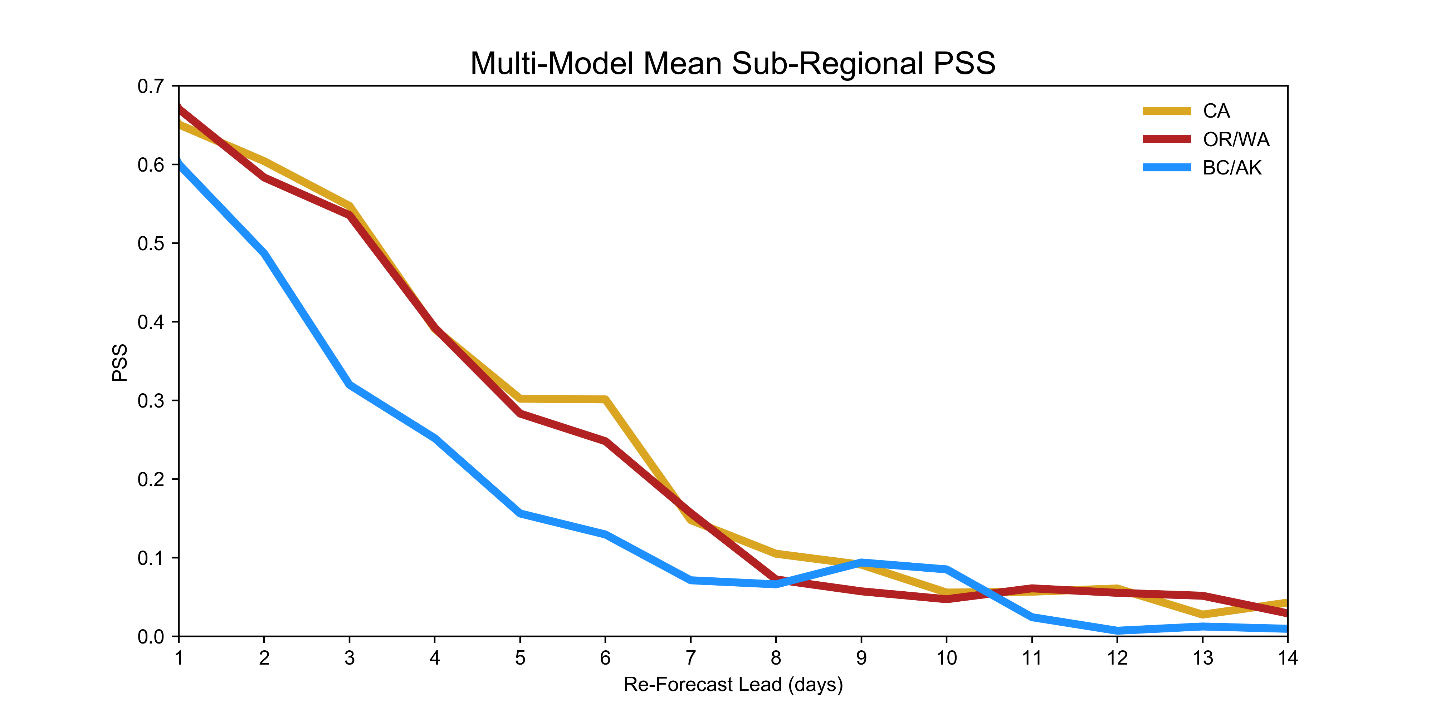CW3E Publication Notice
Assessment of Numerical Weather Prediction Model Reforecasts of the Occurrence, Intensity, and Location of Atmospheric Rivers along the West Coast of North America
August 24, 2018
Colorado State University (CSU) graduate student Kyle Nardi and co-authors Dr. Elizabeth A. Barnes of CSU and CW3E director Dr. F. Martin Ralph have published a study assessing how well numerical weather prediction (NWP) models predict landfalling atmospheric rivers (ARs) along the West Coast of North America at short and medium-range lead times (1-14 days). The article, titled “Assessment of Numerical Weather Prediction Model Reforecasts of the Occurrence, Intensity, and Location of Atmospheric Rivers along the West Coast of North America”, is now available as an Early Online Release in Monthly Weather Review (Nardi et al., 2018).
The study, funded by CW3E, examined AR landfall re-forecasts from the control runs of nine operational weather models, including those from ECMWF and NCEP. Re-forecasts were assessed in terms of three components of an effective AR forecast: AR occurrence, intensity, and landfall location. The study found that, in terms of AR occurrence, models provide little additional skill compared to a random forecast at leads approaching 14 days. In addition, at leads of 1-7 days, occurrence-based skill is significantly lower in British Columbia and Alaska compared to California, Oregon, and Washington (see below).

Figure 1. (Fig. 5 from Nardi et al. 2018) Model-averaged Peirce Skill Score (PSS) for three sub-regions along the West Coast of North America. PSS ranges from -1 to 1, with 1 implying a perfect forecast and 0 implying no additional skill compared to a random forecast.
With respect to AR intensity re-forecasts, the magnitude of landfall integrated water vapor transport (IVT) error stays fairly constant with lead time. However, at leads greater than 3 days, models tend to over-predict landfall IVT. The study also found that the magnitude of AR landfall location error increases with lead time, with northward errors favored in California, Oregon, and Washington. However, these northward errors are not as frequent as expected from climatology. Overall, these results provide an updated overview of how well our current weather models perform when predicting landfalling ARs. The findings also highlight the need for further examination related to the causes of model errors at lead times of 1-14 days.
This work was funded under a sub-award from the Forecast Informed Reservoir Operations (FIRO) project. Data used in the study came from ECMWF through the Subseasonal to Seasonal (S2S) International Project.
Nardi, K., E. Barnes, and F. Ralph, 2018: Assessment of Numerical Weather Prediction Model Re-Forecasts of the Occurrence, Intensity, and Location of Atmospheric Rivers along the West Coast of North America. Mon. Wea. Rev., doi:10.1175/MWR-D-18-0060.1
